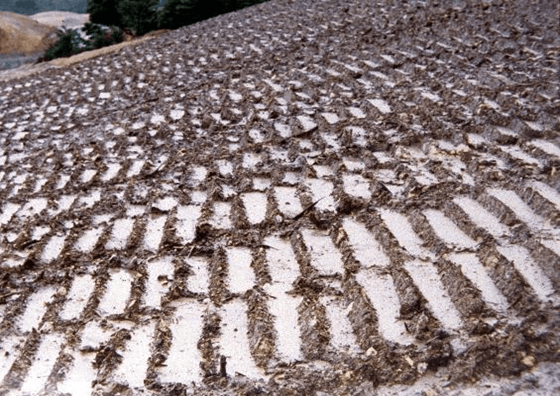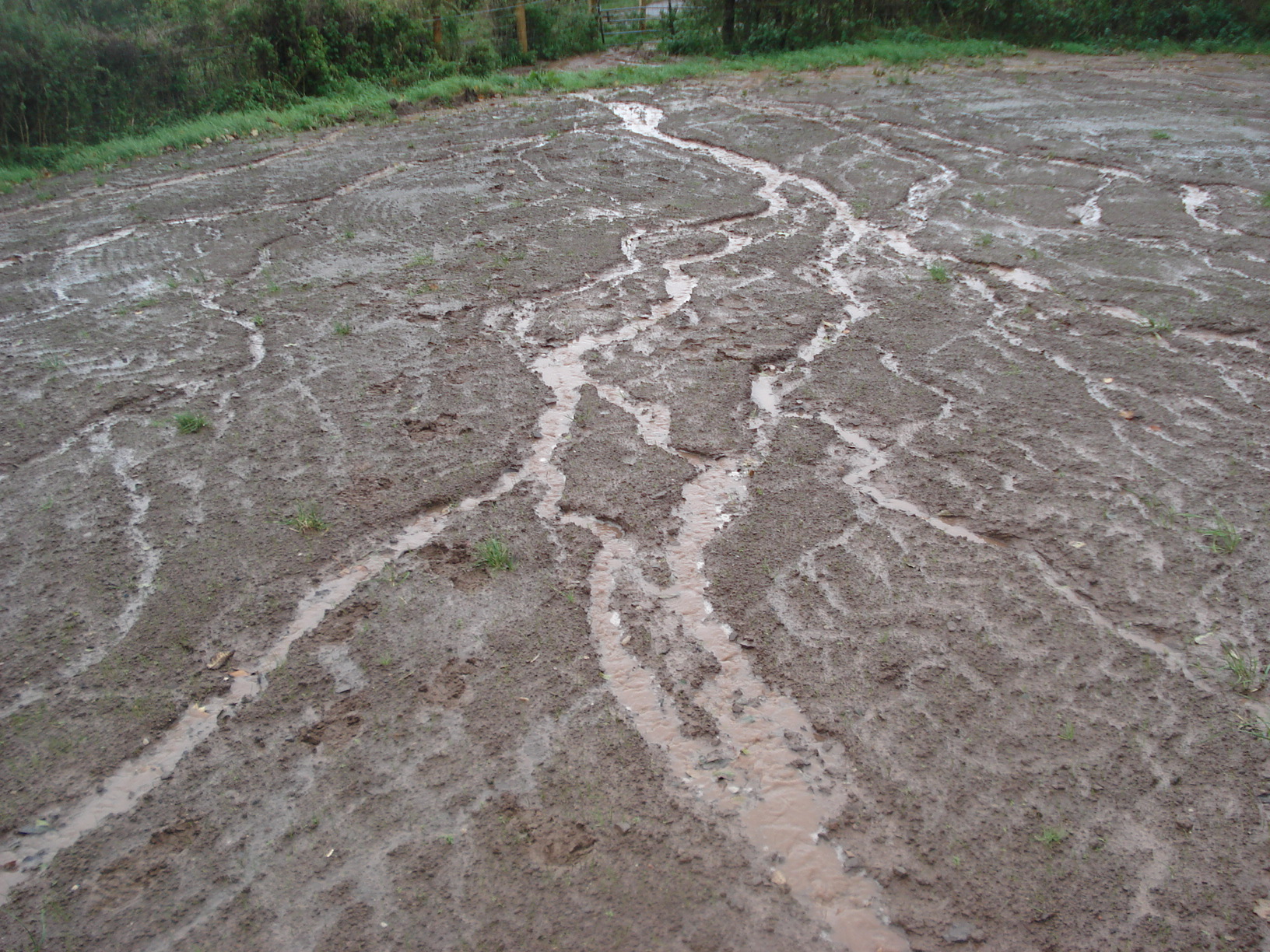It’s that time of year where the habit of saying the popular phrase ‘April Showers brings May Flowers’ begins. However, to contractors and owners, rain is a significant concern if not dealt with properly, leaving April showers bringing complications and worry. Whether a project is under construction, or a homeowner is looking to purchase a new home, how the terrain and landscape handles water is of major importance and budget. Michigan is ranked second in the country for states having the most water totaling 40,175 square miles. We also have an annual precipitation of 30 to 38 inches, with the most rainfall being towards the southwest of the state. Given our state has so many sources of water, certain locations for construction can prove difficult if the natural drainage isn’t adequate and upgrades are necessary.
Prior to any system being installed, surveys of the topography must be done. Topography is the study of forms and features of land surfaces, such as understanding the natural grading of hills, the materials of the soil, and vegetation present. Understanding how to remove these things is important in construction, as removing soil and vegetation could cause more work to be done later. Plans are then made for the land showing the various features observed, along with how to create a temporary draining system for the duration of construction, and the permanent drainage system upon completion. The main goal in creating a draining system is to disperse water in a manner that will eliminate pooling and prevent slides, thus saving your foundation and budget.
Contractors use multiple pieces of heavy machinery to achieve the desired outcome should heavy or long-term rain occur during construction. Bulldozers are often used to clear any brush or surface vegetation that may be in the way of the planned site, but they’re also helpful in prepping the ground for draining. Machinery with tracks often have lines across them, which create small ditches across the ground in a process called surface roughening. Contractors will have machines run perpendicular to the anticipated flow of water on a site, so when rain does fall, the ditches give the water more time to soak into the ground or drain on a smaller slope rather than directly down. When rain drains straight down dirt slopes, this creates channels throughout the ground called piping. If piping begins to occur, this can cause sections to cave and start slides which can be dangerous to workers, and detrimental to a projects progress.
You may also see silt fences and down drains being installed during construction to maintain drainage. Silt fences are extremely helpful in keeping sediment away from areas of the site that you want to protect, such as neighboring yards or points of the work scope that need to stay clear of debris. At Lake Lansing South, you will see silt fences placed just outside of the sidewalks in the lake. Here, our team is currently working on replacing the sidewalks by the beach and utilizing silt fences to prevent any debris and materials from entering the lake. Temporary down drains may also be used on site until the permanent draining system can be installed. Black pipes will be laid down sloped surfaces to allow water in areas that pool, such as driveways and excavated sites, to move the water ensuring the ground remains stable during construction. Just as there is a large range in ways to create temporary drainage systems, the permanent choices are just as vast.
Depending on the drainage issue, certain systems will work far better than others. Multiple systems can also be used for the same project and may be connected to each other! For starters, downspouts and gutters are the first point of defense against rain and can be run underground to another area. However, when doing this, there must be enough of a slope to take the water away or else it can become backed up and cause flooding over your gutters. You could also have the downspouts directed into a rain barrel which can be useful to water plants in the summertime!
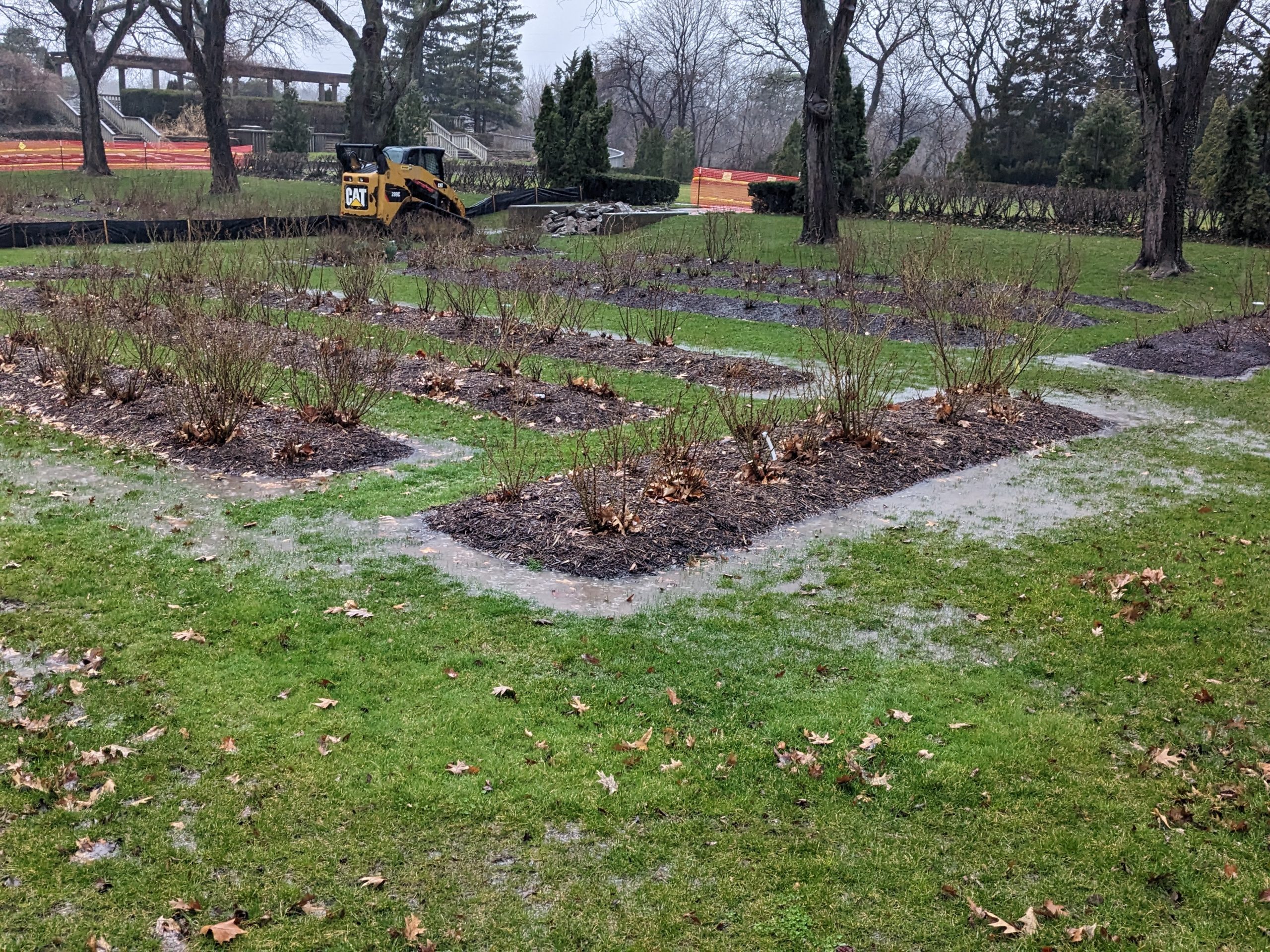
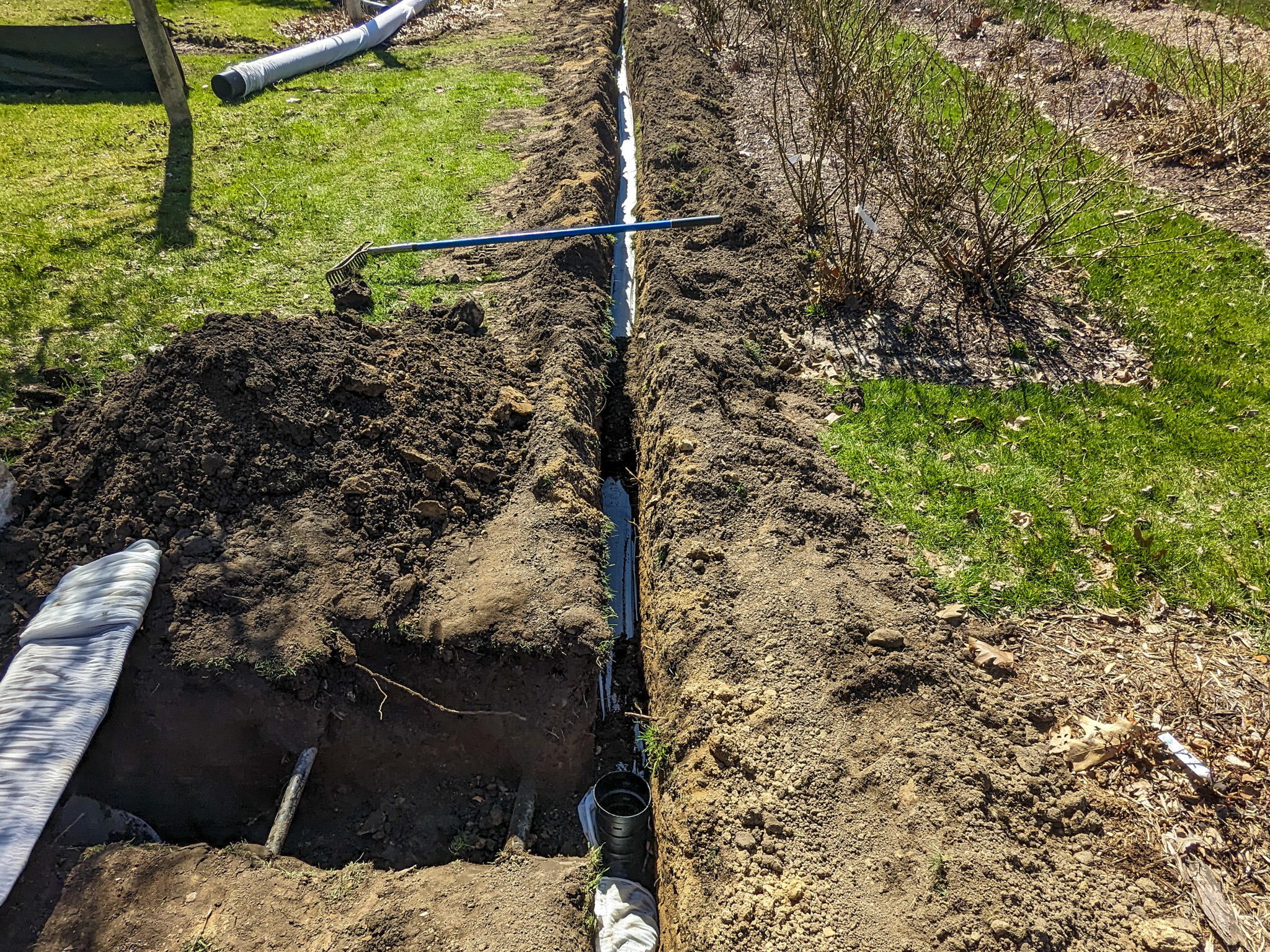
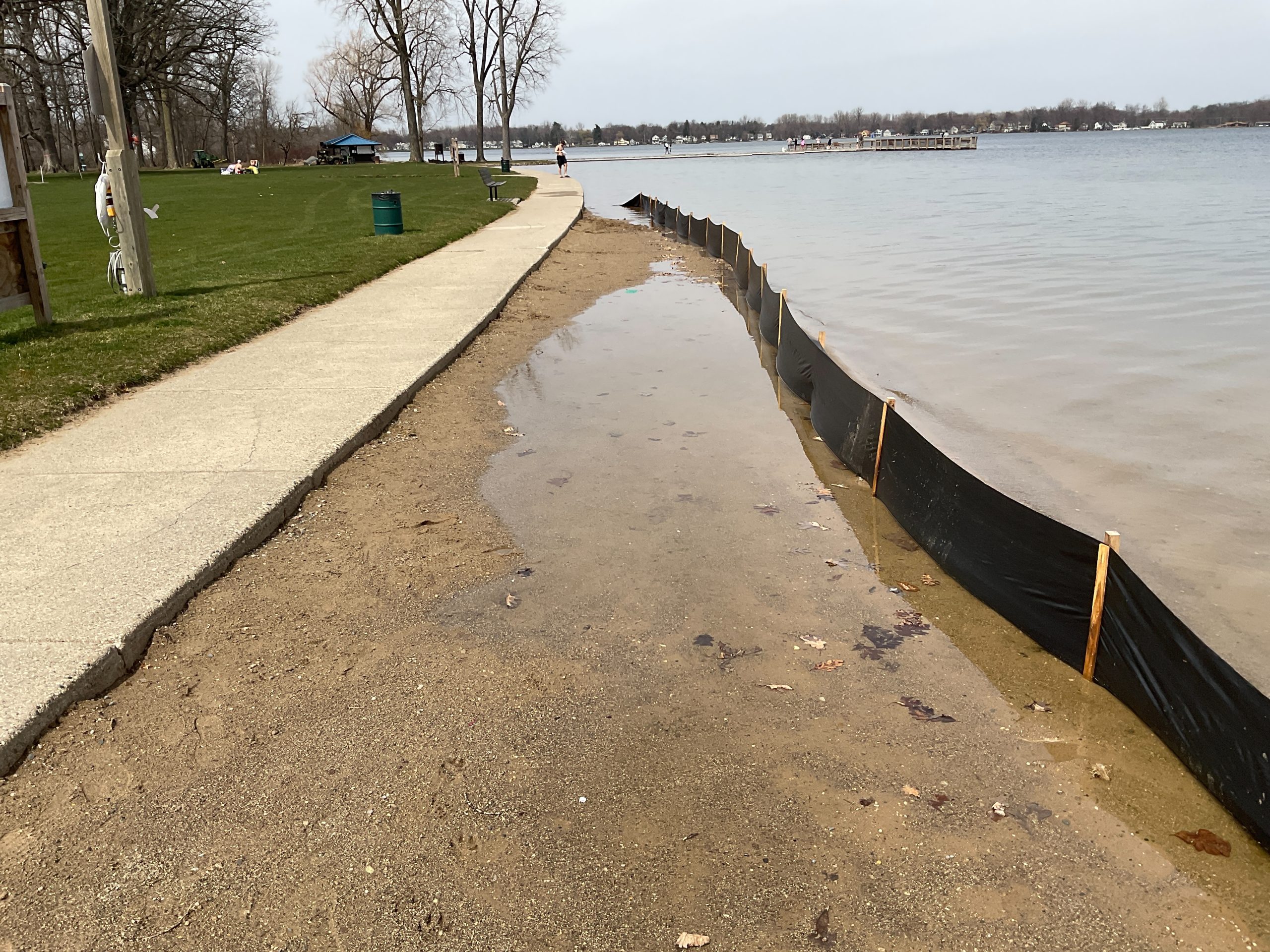
There are also options for areas of the ground that just naturally hold more water. Subsurface drainage systems are installed just below the surface of the soil to remove the water after it’s seeped into the ground. This method is widely known as a French drain after Henry French, who in 1859 wrote a book on a drain that allowed his oversaturated crops to drain properly improving their growth and his crop yield. Piping is laid in trenches that will collect water from underneath and allow it pass through and disperse, thus allowing the ground to maintain a manageable level of water. Surface drainage systems are your typical ditches and channels you see along roadways, or you may notice them in warehouses that experience water leaks such as food processing facilities. Laux Construction is renovating the Frances Park Rose Garden in Lansing where we are heavily working on a new French drain installation! The garden was having a hard time maintaining the grounds as the flower beds were not contained, and the ground easily became oversaturated. Our team has been working on placing a new subsurface drainage system to combat the excess water and lead it away from the flower beds and walking paths.
Ensuring your yard or job site has proper drainage and barriers in place is essential to a lasting build. Having poor drainage can be signs of sinkholes, in-home flooding, and other problems. After observing the topography, make sure you research the best options to combat your drainage and then have a skilled professional install the new system. Contractors will be able to give you an in-depth look at what’s below and could save your budget by being more thorough than a DIY drainage system!
Share this Post



